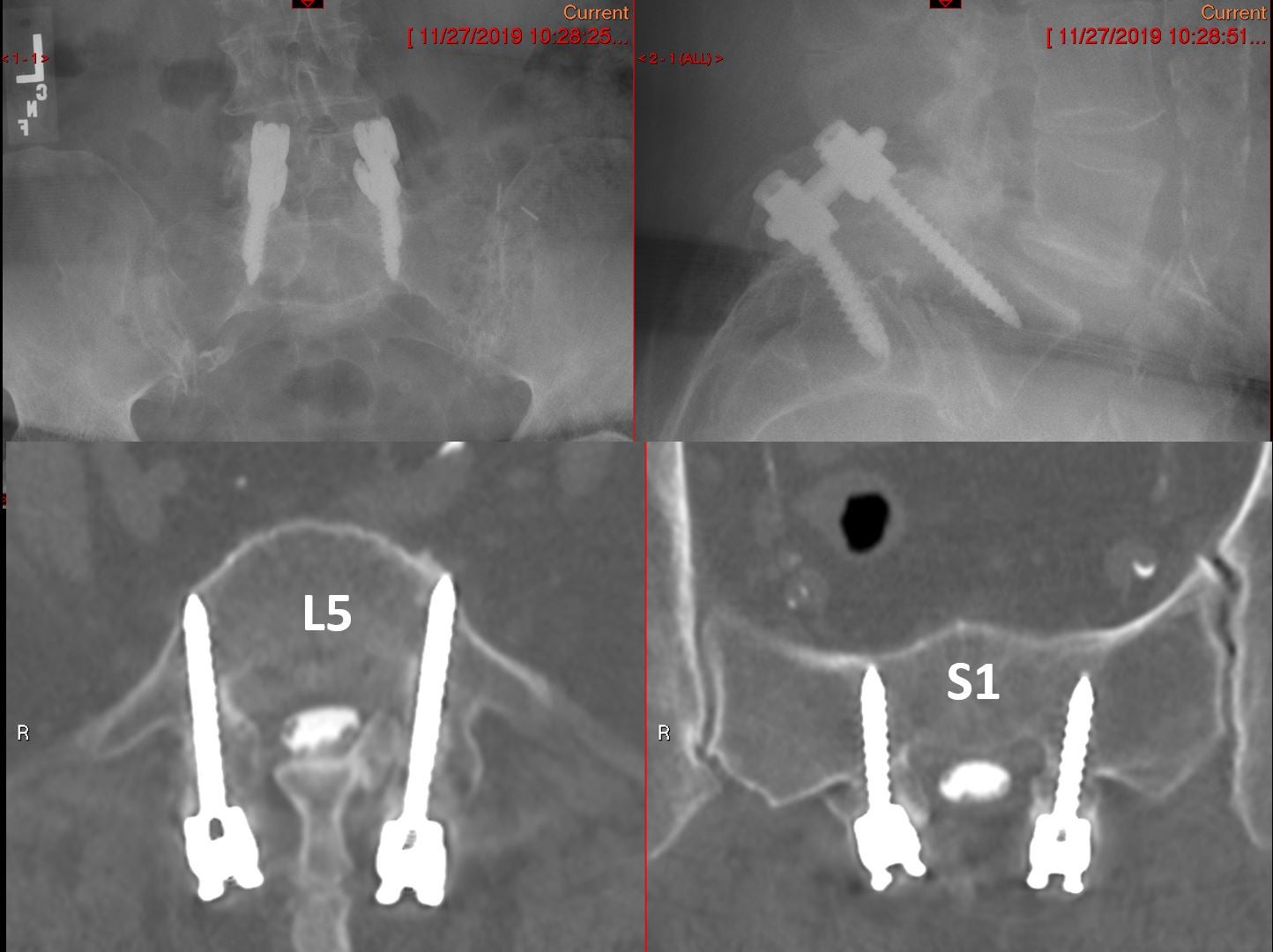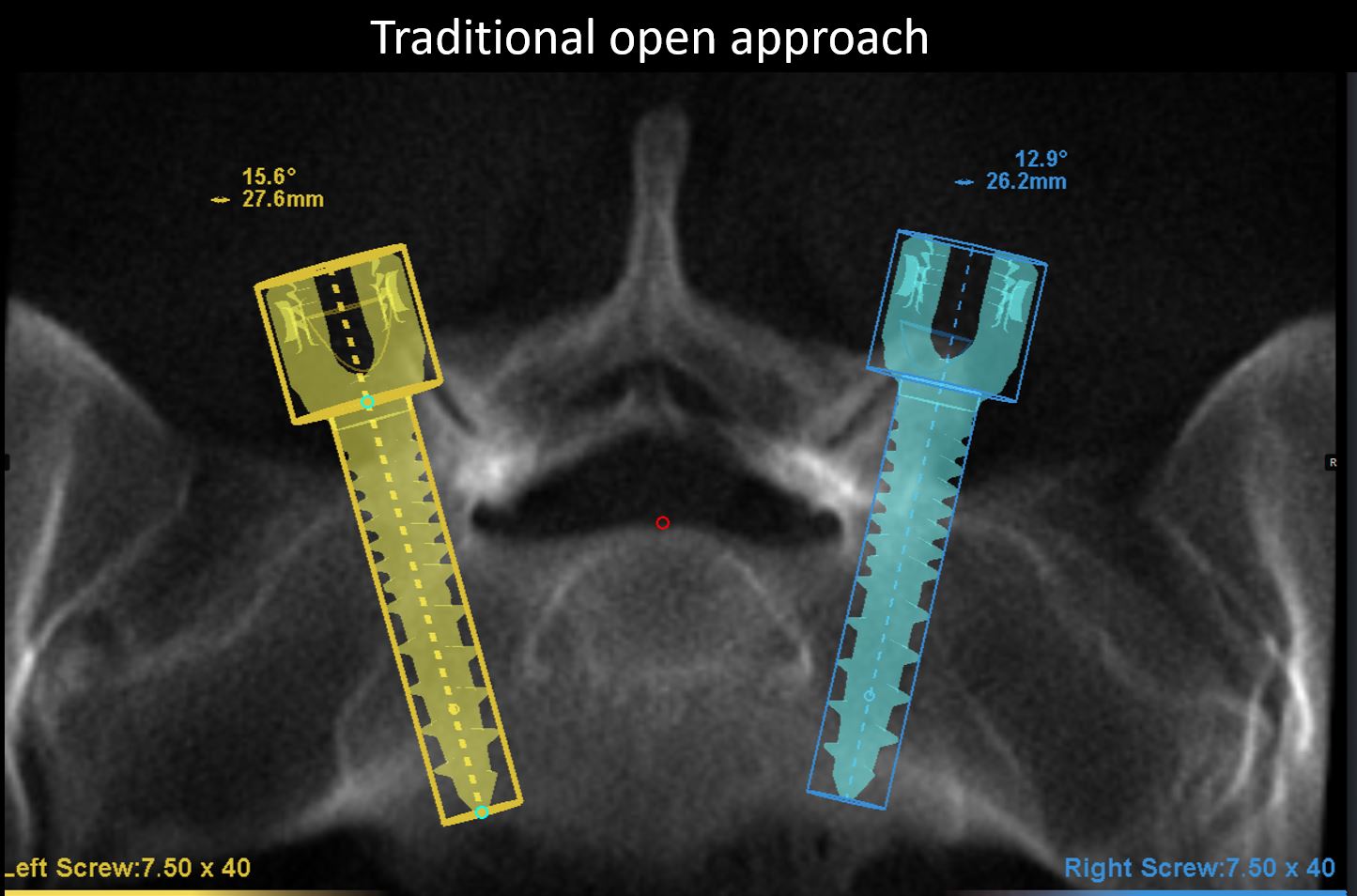Robot Assisted Spine Surgery
Robotic surgery is widely utilized across many surgical subspecialties including gynecology, urology, and general surgery for minimally invasive procedures. Robot-assisted spine surgery has emerged as a solution to place pedicle screws accurately and mini-invasively while decreasing radiation exposure to both patients and the operating team, complication rates, operative time, and recovery time. The first spine-robot was approved by FDA in 2004.
Benefit of Robotic-Assisted Surgery
- Less Invasive
- Improved surgical accuracy
- Less exposure to radiation
- Less risk for surgical complications

Spondylolisthesis is slipping of a vertebra on the vertebra directly below it. It is usually caused by degeneration or spondylolysis, which is a crack in one of vertebra. It causes lower back pain, buttocks pain and radiating pain in the legs.

Figure above is a patient with spondylolytic spondylolisthesis had surgery 15 years ago, which shows the screws placement in a divergent position that has unfavorable biomechanical property compared with convergent position.



Figure above showed before (upper panel) and after (below panel) the surgery. You can see we place the screws with larger convergence. If we did not use Robot, we had to make a long incision and perform excessive muscle dissection to achieve the large convergence.
